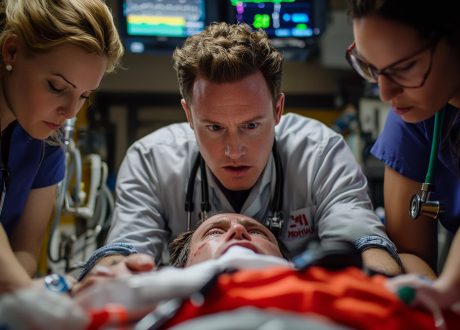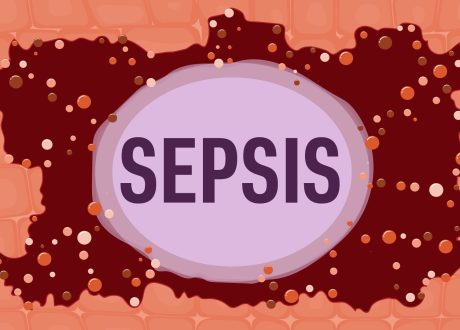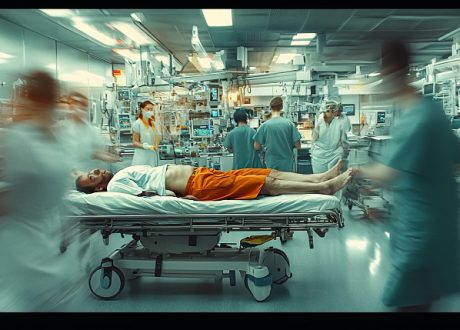Podcast: Play in new window | Download
Date: November 1st, 2021
Reference: Katsanos et al. Utility of Intravenous Alteplase Prior to Endovascular Stroke Treatment: A Systematic Review and Meta-analysis of RCTs. Neurology 2021
Guest Skeptic: Dr. Michal Krawczyk is in his fifth year of neurology residency at Western University in London, Ontario, Canada. He is interested in acute neurological illness, including cerebrovascular disease and epilepsy. Next year he will be beginning a Neurohospitalist fellowship at the University of Texas at Houston.
Case: A 70-year-old male with a past medical history of hypertension and peripheral artery disease, last seen normal 1.5 hours ago, presenting with acute onset of aphasia and right sided face and arm weakness. He has a National Institute of Health Stroke Scale (NIHSS) score of 7. At 1am a CT angiogram is obtained that demonstrated a left M2 occlusion, and an Alberta Stroke Program Early CT Score (ASPECTS) of 10. Given the recent publications of trials assessing if mechanical thrombectomy alone is non-inferior to a bridging approach with tPA in addition to mechanical thrombectomy, you wonder whether these trials apply to your patient and what is the best course of action.
Background: There are two treatments for acute ischemic stroke, systemic tPA and mechanical thrombectomy (MT). We have covered some studies looking at both treatment modalities on the SGEM.
Mechanical thrombectomy is indicated only for patients with large vessel occlusions (LVOs) on imaging. There were a few earlier studies on MT that failed to demonstrate superiority, but it was the study MR CLEAN published in NEJM 2015 that really changed practice. It was a multicenter, randomized, unblinded trial treating 500 patients with an anterior circulation LVO within six hours of symptom onset. The primary outcome was mRS 0-2 at 90 days and it showed an absolute difference of 14% favoring MT. This gives a NNT of 7.
For patients with LVOs it is unclear whether there is any additional benefit with administering tPA before thrombectomy, also known as a bridging approach, in contrast to skipping tPA and directly proceeding with MT.
There are several theoretical advantages of a bridging approach. These potential advantages include thrombus debulking allowing easier clot retrieval, distal emboli lysis, recanalization prior to MT, and it may be beneficial in cases of unsuccessful MT. Conversely, a direct to MT approach may lead to fewer intracerebral hemorrhages (ICH) and quicker initiation of endovascular thrombectomy.
Recently, three randomized control non-inferior trials on this topic have been published, two from China (DIRECT-MT, and DEVT) and one from Japan (SKIP). Two trials demonstrated non-inferiority while one trial failed to show that direct MT was non-inferior.
CLINICAL QUESTION: WHAT IS THE BEST STRATEGY FOR TREATING PATIENTS WITH AN ACUTE LARGE VESSEL OCCLUSION STROKE, DIRECT TO MECHANICAL THROMBECTOMY OR A BRIDGING APPROACH WITH TPA FOLLOWED BY MECHANICAL THROMBECTOMY?
Reference: Katsanos et al. Utility of Intravenous Alteplase Prior to Endovascular Stroke Treatment: A Systematic Review and Meta-analysis of RCTs. Neurology 2021
- Population: Randomized controlled trials of patients with acute large vessel occlusion stroke qualifying for MT
- Exclusions: Observational studies and non-randomized trials
- Intervention: MT alone
- Comparison: MT bridged with tPA
- Outcome:
- Primary Outcome: mRS score 0-2 at three months
- Secondary Outcomes: mRS 0-1 and ordinal shift at three months, successful recanalization before MT, successful recanalization after MT, randomization to puncture time, symptomatic intracranial hemorrhage (sICH), any ICH and all-cause mortality
Authors’ Conclusions: “We detected no differences in functional outcomes of IV thrombolysis–eligible patients with an acute LVO receiving dEVT compared to BT. Because uncertainty for most endpoints remainslarge and the available data are not able to exclude the possibility of overall benefit or harm, further RCTs are needed.”
KEY RESULTS: NO STATISTICAL DIFFERENCE IN GOOD NEUROLOGIC OUTCOME









